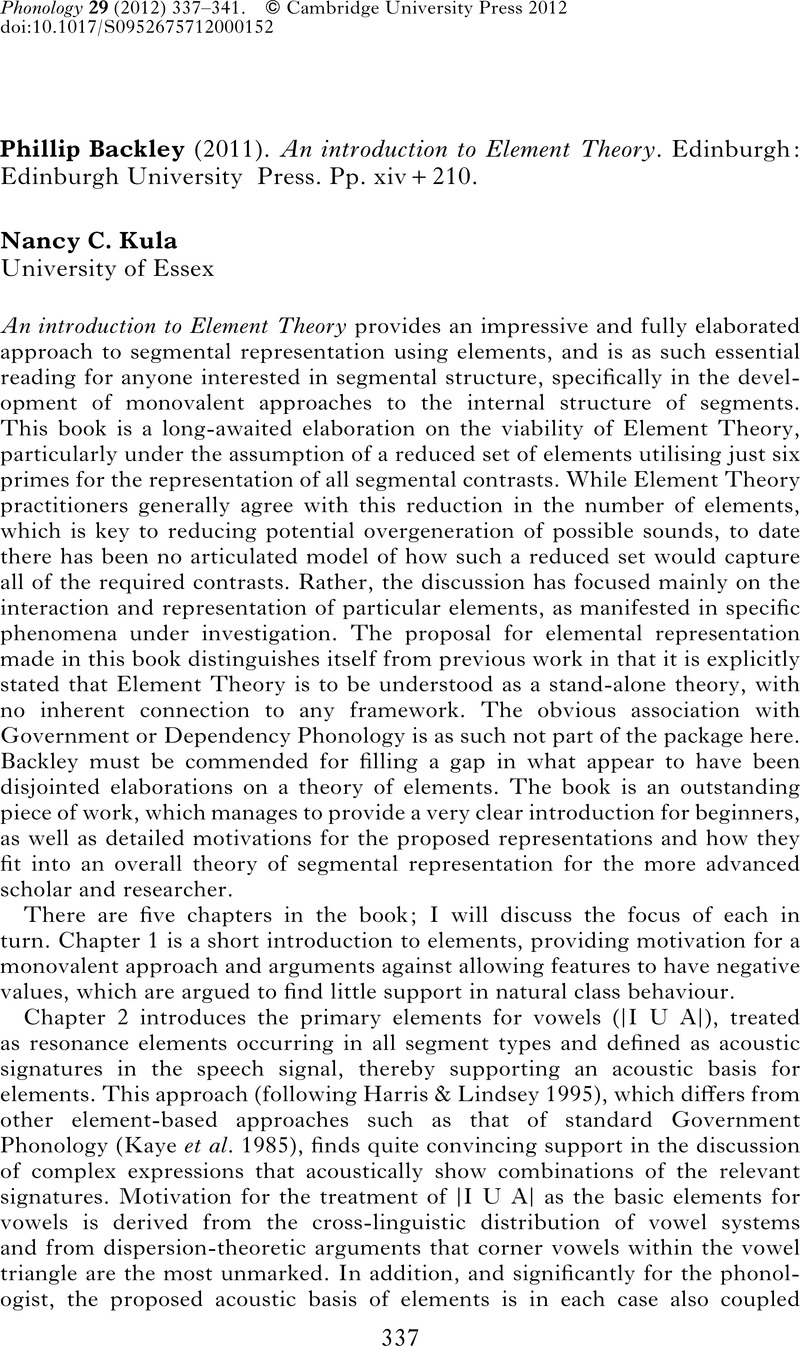No CrossRef data available.
Article contents
Phillip Backley (2011). An introduction to Element Theory. Edinburgh: Edinburgh University Press. Pp. xiv+210.
Published online by Cambridge University Press: 06 September 2012
Abstract
An abstract is not available for this content so a preview has been provided. Please use the Get access link above for information on how to access this content.

- Type
- Book Review
- Information
- Copyright
- Copyright © Cambridge University Press 2012
References
REFERENCES
Harris, John & Lindsey, Geoff (1995). The elements of phonological representation. In Durand, Jacques & Katamba, Francis (eds.) Frontiers of phonology: atoms, structures, derivations. London & New York: Longman. 34–79.Google Scholar
Jakobson, Roman C., Fant, Gunnar M. & Halle, Morris (1952). Preliminaries to speech analysis: the distinctive features and their correlates. Cambridge, Mass.: MIT Press.Google Scholar
Kaye, Jonathan, Lowenstamm, Jean & Vergnaud, Jean-Roger (1985). The internal structure of phonological elements: a theory of charm and government. Phonology Yearbook 2. 305–328.CrossRefGoogle Scholar
Nasukawa, Kuniya (2005). A unified approach to nasality and voicing. Berlin & New York: Mouton de Gruyter.CrossRefGoogle Scholar
Scheer, Tobias (1999). A theory of consonantal interaction. Folia Linguistica 32. 201–237.Google Scholar




